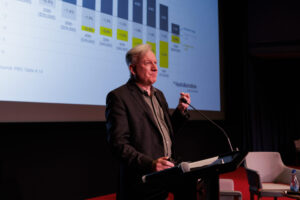by Richard Denniss
[Originally published in the Australian Financial Review, 11 June 2019]
How good is the Australian economy? Not very. It’s as if months of prime ministerial promises that the economy was strong had absolutely no impact on employers’ desire to boost wages or consumers’ ability to spend. GDP growth is at its lowest levels since the Global Financial Crisis, wage growth remains low, productivity growth is at record lows, and the Reserve Bank of Australia just dropped interest rates to their lowest levels ever.
And how good is Treasury’s ability to make economic forecasts? Not very. It’s only two months since Treasurer Frydenberg delivered his first budget speech, which opened declaring that, “the budget is back in the black and Australia is back on track”. While it’s not clear which track we are currently on, it is clearly not the track Frydenberg was talking about in April.
Despite Treasury’s inability to see two months down the road, the Morrison government wants to bet tens of billions of dollars worth of tax cuts on the hope that its long-run forecasting is more accurate than its short-term forecasting. What could go wrong?
The budget surplus that Frydenberg delivered in April 2019 is yet to arrive. It’s not actually due for delivery until June 2020. And unless wage growth, productivity growth and consumer spending picks up, and Trump’s trade wars calm down, Frydenberg’s promised surplus is as likely as Labor taking death taxes to the next election.
But while no one seems to care about broken political promises any more, a lot of people still care about broken economies. And there’s a real risk that the economic fairytale the Treasurer told voters for the last two months will cause an economic nightmare.
Slow wage growth and slow economic growth add up to slow revenue growth and, almost inevitably, a budget deficit. The Treasurer’s only option if he wants to rescue his promised surplus, or his credibility, is to cut or delay government spending. The exact opposite of what a struggling economy needs. Even RBA governor Philip Lowe is calling on the government to boost public spending and stop relying on interest rate cuts to boost the economy.
Much has been made about how few monetary policy “bullets” the RBA has left. With official interest rates at 1.25 per cent there is literally not much more they can do if the domestic or international economy doesn’t pick up soon. But there’s been far less discussion about how to make best use of our fiscal policy “bullets”.
Cutting public spending to protect Frydenberg’s premature promise of a budget surplus would be a very bad way to enter an economic slowdown: it’s the equivalent of pouring water on a fire that’s struggling to take hold. But rushing to pass the $95 billion stage three tax cuts that don’t kick in until 2024 – half of which flow to the top 20 per cent of income earners – is like leaving the entire wood supply out for the winter because you are confident it won’t rain.
No one knows when the next GFC will hit, or the next natural disaster. Treasury has spent the last six years forecasting that wage growth will pick up “soon”. While no one knows what the future holds, with rising unemployment and interest rates at record lows, the last thing this Parliament needs to do is pass enormous income tax cuts that do nothing to help us in the short term and cause us nothing but harm in the long run.
Two months ago, Treasury said we were in for smooth sailing. They were wrong. And two months ago the Treasurer said that with so much clear sailing ahead of us that we could afford to lock in big future tax cuts. He was wrong too. But in three years’ time, after the Coalition’s been in power for nine years, wage growth might finally have picked up, unemployment might finally be below 600,000 and unemployment benefits might have finally risen in real terms. If that’s the case, maybe then, it would be a good time to cut taxes for high income earners.
But just in case Treasury’s forecasts are completely wrong again, and we stay on the low wage, low growth trend the Coalition has put us on – wouldn’t it make sense to wait until the future arrives before we spend $95 billion on future tax cuts? Let’s hope the Senate thinks so.
Richard Denniss is chief economist at The Australia Institute @RDNS_TAI
Between the Lines Newsletter
The biggest stories and the best analysis from the team at the Australia Institute, delivered to your inbox every fortnight.
You might also like
Stage 3 Better – Revenue Summit 2023
Presented to the Australia Institute’s Revenue Summit 2023, Greg Jericho’s address, “Stage 3 Better” outlines an exciting opportunity for the government to gain electoral ground and deliver better, fairer tax cuts for more Australians.
18 Reasons why the Stage 3 tax cuts should be redesigned
Australia Institute research shows the Stage 3 income tax cuts are fiscally irresponsible, massively expensive and completely unfair.
Richard Denniss: National Press Club Address
On Wednesday, 31 January 2024, Richard Denniss and Allegra Spender MP addressed the National Press Club for a debate on the Stage 3 tax reforms. **Check against delivery** [See below for transcripts] Tax is good. Tax is an investment in our society and the highest taxed countries in the world also happen to be the



